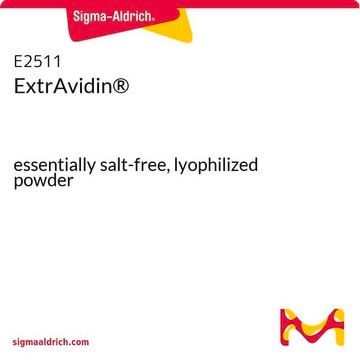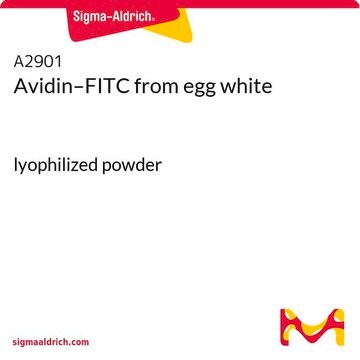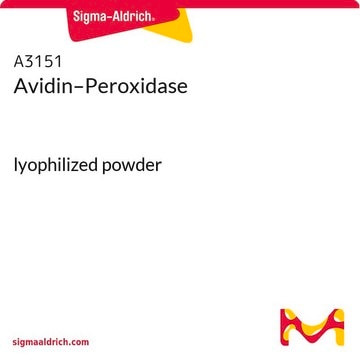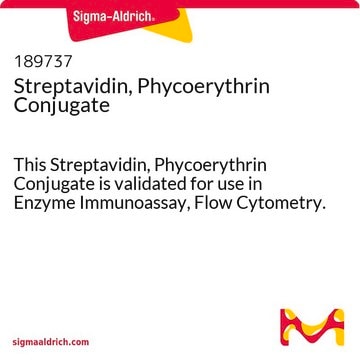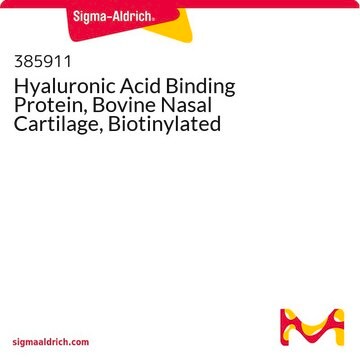E2761
ExtrAvidin®−FITC
buffered aqueous solution
About This Item
Empfohlene Produkte
Konjugat
FITC conjugate
Form
buffered aqueous solution
Kennzeichnungsgrad
3-6 mol fluorochrome per mol protein
Methode(n)
immunohistochemistry (formalin-fixed, paraffin-embedded sections): 20 μg/mL using human tissues
indirect immunofluorescence: 1:200
Versandbedingung
dry ice
Lagertemp.
−20°C
Allgemeine Beschreibung
Anwendung
- immunohistochemistry (formalin-fixed, paraffin-embedded sections) at a concentration of 20μg/mL using human tissues.
- Immunofluorescence†
- competitive binding assay
Physikalische Form
Angaben zur Herstellung
Rechtliche Hinweise
Haftungsausschluss
Lagerklassenschlüssel
12 - Non Combustible Liquids
WGK
WGK 2
Flammpunkt (°F)
Not applicable
Flammpunkt (°C)
Not applicable
Analysenzertifikate (COA)
Suchen Sie nach Analysenzertifikate (COA), indem Sie die Lot-/Chargennummer des Produkts eingeben. Lot- und Chargennummern sind auf dem Produktetikett hinter den Wörtern ‘Lot’ oder ‘Batch’ (Lot oder Charge) zu finden.
Besitzen Sie dieses Produkt bereits?
In der Dokumentenbibliothek finden Sie die Dokumentation zu den Produkten, die Sie kürzlich erworben haben.
Kunden haben sich ebenfalls angesehen
Unser Team von Wissenschaftlern verfügt über Erfahrung in allen Forschungsbereichen einschließlich Life Science, Materialwissenschaften, chemischer Synthese, Chromatographie, Analytik und vielen mehr..
Setzen Sie sich mit dem technischen Dienst in Verbindung.



